Reviving Burial in Tunnels
Every year the tunneling business is expanding and collaboration with the International Society of City and Regional Planners (ISOCARP) for the future design of cities and urban communities is in the making. During the last half of this century, billions of people migrated to cities, and it is estimated that by 2030 almost five billion people worldwide will reside in urban communities.
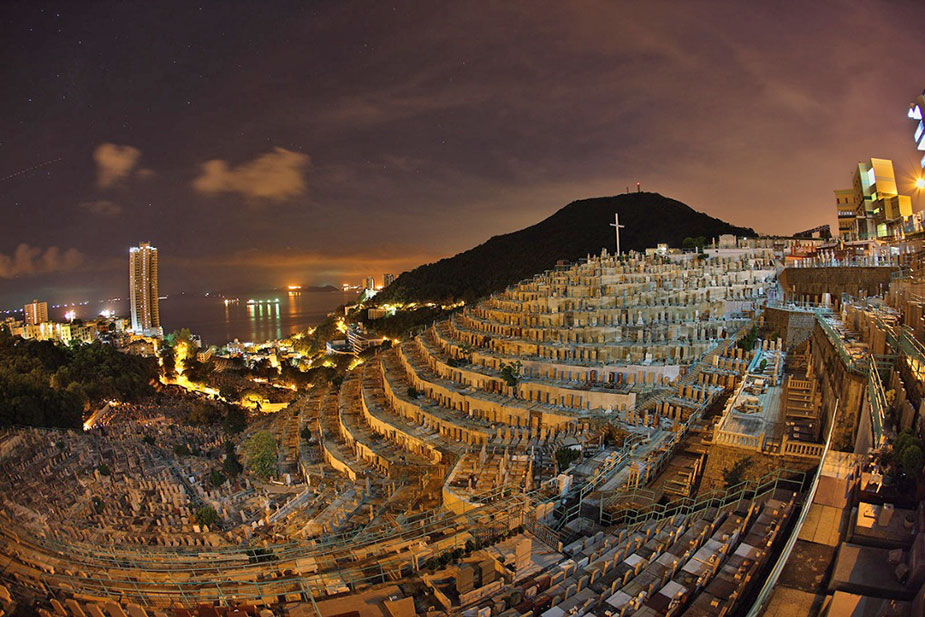
Cemetery in Hong Kong
The use of underground space for burials
Hence, “Underground development will be an important tool in reshaping our urban areas to meet the challenges of the future without destroying their heritage or worsening their surface environment” (Esaki, 2005). In 2013, the Organization for Economic Co-operation and Development (OECD) estimated life expectancy to be around 80 years, meaning that in less than a decade we will need to bury billions of people in cities and urban communities, while trying to retain the deceased’s beliefs and customs.
Religion plays a major role in our lives, and many people worldwide still decline to cremate their body after their death; therefore, cemeteries are essential for city inhabitants. Rites and traditions usually call for burials to be near the place of residence, which allows the remaining family members and friends to visit the grave frequently, at least in the first years. This is a challenge that urban designers and architects must confront while trying to solve the problems of future urbanization.
In recent years, population growth, the rising cost of land and the extensive preservation of green areas have made cemeteries a burden and a nuisance, particularly for large cities and communities. Many graveyards that were once on the city’s outskirts have become lifeless islands in populated areas, rarely visited by the second and later generations. Cities worldwide face the challenge of allocating less land to maintain current burial practices. In response, some cities have begun to bury their dead at a great distance from the community; others have started to stacked burials, one on top of the other, while still others are constructing buildings and even skyscrapers for the practice of burial.
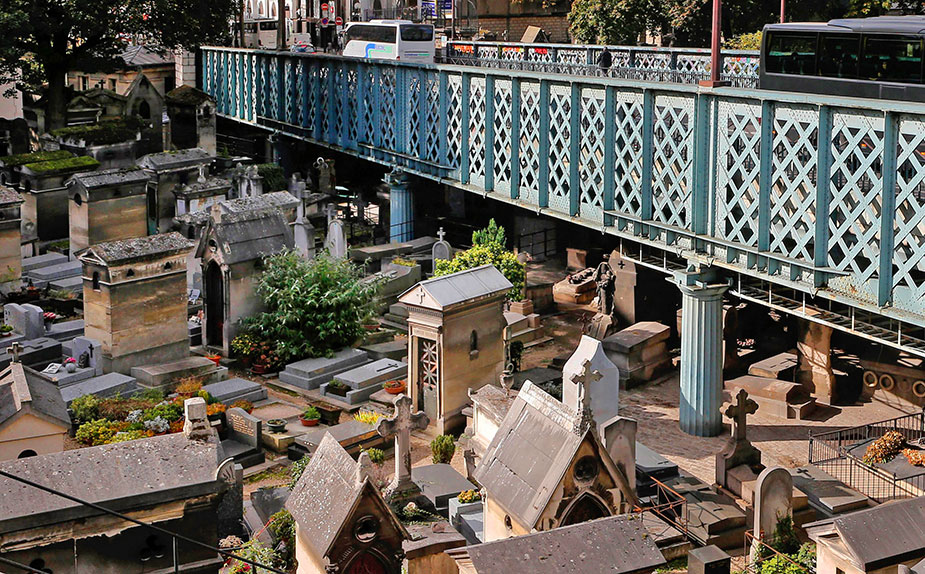
“Lifeless Island” cemetery, Paris, France
Another common practice in some places is to ask the living relatives of the deceased to pay a property tax for the grave after a few years, in order to avoid the grave being destroyed and the land reused. However, many find this solution disrespectful. These factors, therefore, present both an opportunity and an inherent challenge. The opportunity lies in better use of environmental resources and existing technology to solve a universal and recurrent need. In addition, the main challenge is how to address this need while respecting sensitive religious, social and cultural practices.
The innovative solution we propose and have already implemented is the use of underground burial.
This concept raises many architectural and technical issues, as well as religious questions. On the technical side, there is the need to allocate an appropriate site using a suitable geological survey; next, appropriate excavation methods must be chosen; and then all other aspects can be addressed, such as; architecture, ventilation, fire safety, accessibility, waterproofing and finishing materials.
The social and religious aspects are no less critical as any technical solution is unlikely to be adopted unless it is perceived as legitimate and respectful. To better understand the latter, we briefly describe below the prevailing burial rites. We then describe our proposed solution and how it is currently being implemented.
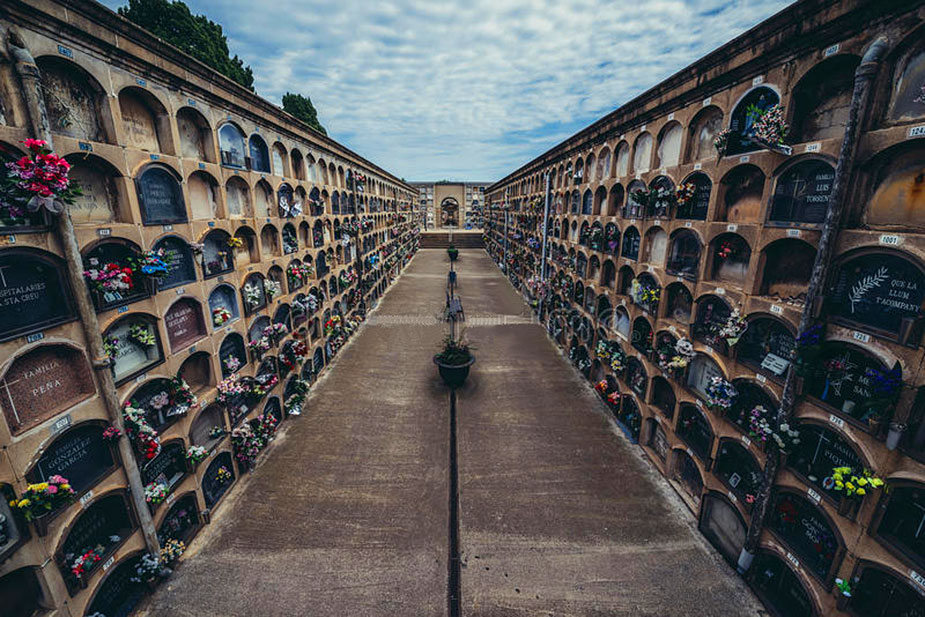
Cemetery in Barcelona
Burial rites
Underground burial in caves and tunnels was common in biblical times in the Kingdom of Judea, known today as the State of Israel. Families, especially distinguished ones, owned caves where family members were buried and where their bones were later stored in a small niche or sarcophagus. This custom existed for thousands of years. In Europe, during early Christianity and later, underground burial sites were used by both Jews and Christians. These sites were mainly known as catacombs, the most famous of which are located in Italy, Sicily, Greece, Malta, etc.
Burial rites and related ceremonies as well as graveyards are considered sacred by many religions. The basic factor common to all of them is the respect one should give to the deceased. There are many records of death and burial in the Old Testament, but the basic theology behind this sacred matter is defined in only a few places. The first time this matter is mentioned in the book of Genesis is when the Lord expelled Adam and Eve from the Garden of Eden, where it was written in Genesis Ch. 3:19: “By the sweat of your face will you earn your food, until you return to the ground, as you were taken from it. For dust you are and to dust you shall return.” This living testament is why we return the dead to the ground.
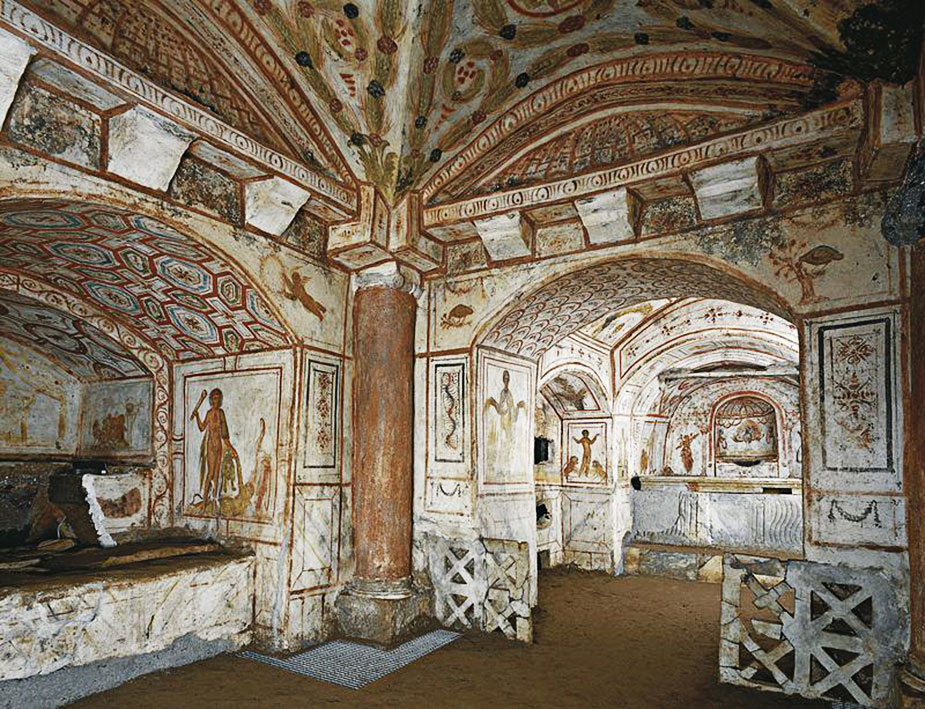
Rooms for burials in the catacombs under the Latin road in Rome, 4th century AD. Source: lelivrescolaire.fr
Subsequently, we find a record of burial in an underground structure when Abraham purchased a burial cave for his family. As recorded in Genesis Ch. 23:19-20: “Abraham buried his wife Sarah in the cave of the field of Machpelah, facing Mamre in the land of Canaan. And so the field and the cave in it passed from the Hittites into Abraham’s possession as a burial site of his own.” This cave served Abraham’s family for many years. Isaac and Jacob were buried there as well. Some even believe that Adam and Eve were also laid to rest in the same cave.
Lastly, the most mystical reference to burial occurs when the prophet Ezekiel is dreaming of walking in the valley of the shadow of death. As recorded in Ezekiel Ch. 37:1-14: “…and set me down in the midst of the valley, and that was full of bones…. and he made me pass by them round about, and Lord they were exceedingly many on the surface of the valley, and Lord they were exceedingly dry…. And I prophesied as He had commanded me, and the spirit came into them, and they lived and stood on their feet, a very great army, exceedingly so…” This testament is probably why many believe in physical resurrection and thus avoid cremation of the body.
In 1963, the Pope lifted the ban on cremation, which, until then, the Roman Catholic Church regarded as blasphemous and highly disrespectful. Nevertheless, the Catholic Church still officially prefers traditional burial, allowing cremation as long as it does not deny the belief in the resurrection of the body and the ashes are returned to the ground. The Eastern Orthodox Church still forbids cremation, and even though the Protestant Church is in favor of cremation, the Evangelist Churches, which have millions of members, decline to do so. Our proposal offers an integrated solution without confronting the issue of traditional burial versus cremation. Underground cemeteries can place the deceased’s ashes back into the ground, thus preserving the basic belief of reuniting with the earth.
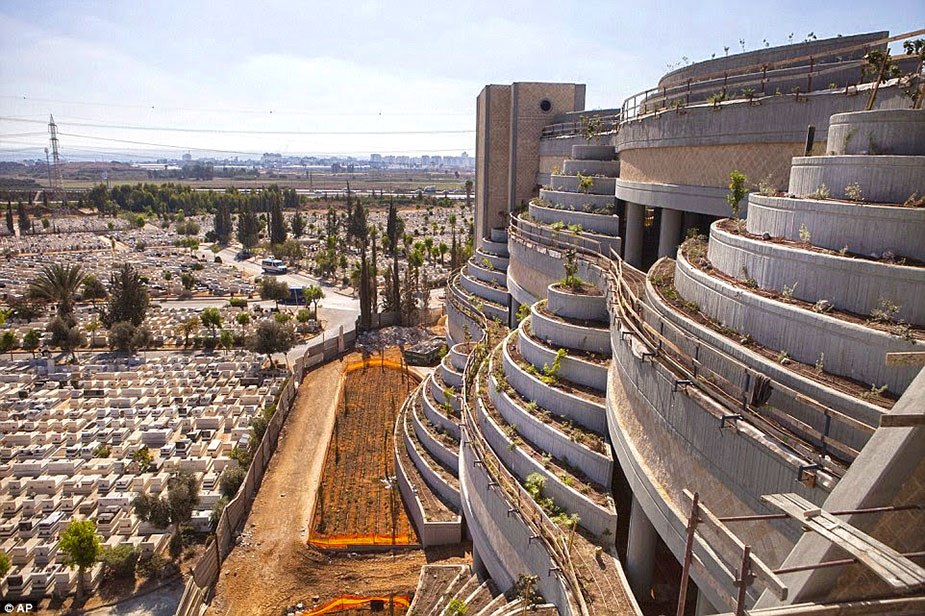
Cemetery in Israel
Jerusalem as a pilot
Jerusalem, which is the capital and the largest city in Israel, must contend with a growing number of burials each year. As a result, authorities responsible for the burial and maintenance of cemeteries have begun to construct multi-level burial structures and now bury people in levels one above the other, on the ground and in burial buildings. In order to avoid long and cumbersome bureaucratic procedures, we decided at first to place burial tunnels underneath an existing cemetery (Fig. 4). We intend to enable both conventional gravesite burial and multi-level burial in these tunnels. At the end of 2014, we designed and constructed two pilot burial tunnels that will accommodate approx. 800 graves. Each tunnel is 9.4m wide, 6.2m high and 50m long.
This project received extensive favorable publicity in local and international media such as: The Washington Post, BBC, RT (Russian TV) and more. The Jerusalem project of reviving burial in tunnels was nominated for the ITA-Tunneling Award in 2015, under the category of innovative use of underground space. Being among the three projects on the shortlist of the ITA award, the committee strengthened the importance of this issue. The nomination should raise the awareness of the tunneling business community to the potential solution for the development of future urban communities and the potential new market.
The large-scale project of 22,000 graves that we are currently executing, evolved from the pilot project and addresses both the technical and religious issues. The overall plan of the extended project is being created with the client’s valuable input, and the scheduled delivery of each section will enable the client to begin using each section as soon as it is completed.
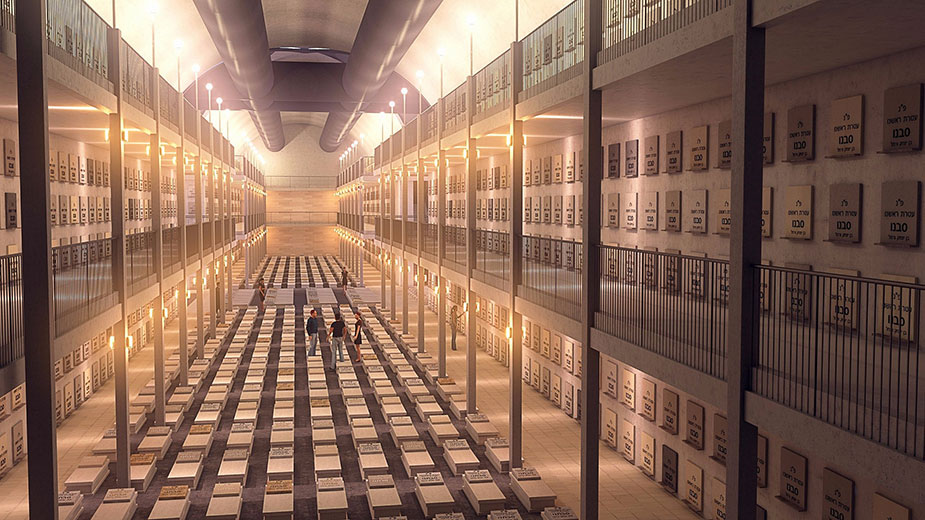
Architectural concept of burial project in tunnels Jerusalem, Israel
Like all tunneling projects, we investigated the site using a geological survey. It assisted us to determine the appropriate paths in order to avoid potential geological obstacles. While utilizing the NATM system, we prepared a suitable contingency support design for various types of rock mass. Until now, we have used all kinds of rock support such as; fore-polling, spiles, rock bolts, shotcrete w/o steel fibers, steel mesh, pre-grouting, etc.
We decided to excavate the tunnels mainly with roadheaders instead of using the drill and blast technique, with the intention of minimizing the disturbance to the daily “business” of the cemetery. The project’s requirements for ventilation, fire safety and accessibility encouraged us to design a main shaft.
The shaft dimensions are 23m by 19m with a 55m depth that will include elevators, air plenum, staircases and service chambers. The shaft will also act as a burial “building” that will accommodate more than 3,000 graves on 10 floors. The negative ventilation system based on the suction of air from the underground space will include ducts with motorized dampers that are governed by a central computerized system.
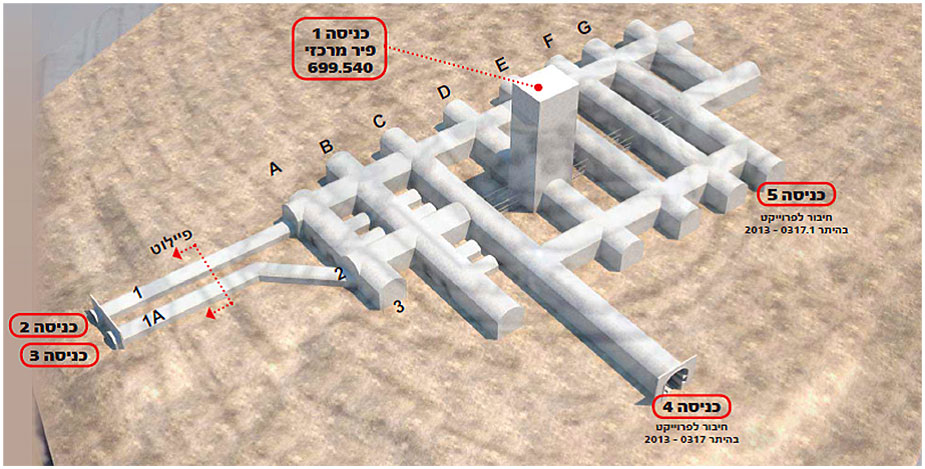
The scheme of the underground cemetery, Jerusalem, Israel
The underground burial space is a new concept in the tunneling world and therefore, we have investigated the potential risks we could encounter. Fire safety is a unique concept that we have developed together with the Israeli Fire and Rescue Services, which will use design codes to evacuate safely and quickly visitors and workers to the assembly points. State-of-the-art CFD computer software that simulates hazardous fire events has already tested the entire area of the underground cemetery.
Additionally, the space shall be divided into sections that are separated by smoke collection zones, which will allow the visitors sufficient time to evacuate in the event of a fire. Due to the minimal use of combustible materials in the underground cemetery, these zones can have a unique, open design that eliminate walls and fire escape doors. Since the space will mostly be covered with shotcrete and natural rock tiles, the use of only fire hydrants, rather than sprinklers, will be necessary. Linear heat detectors will use a fiber optic system that will be connected to the site’s fire control system, which will also be connected to the city’s fire department.
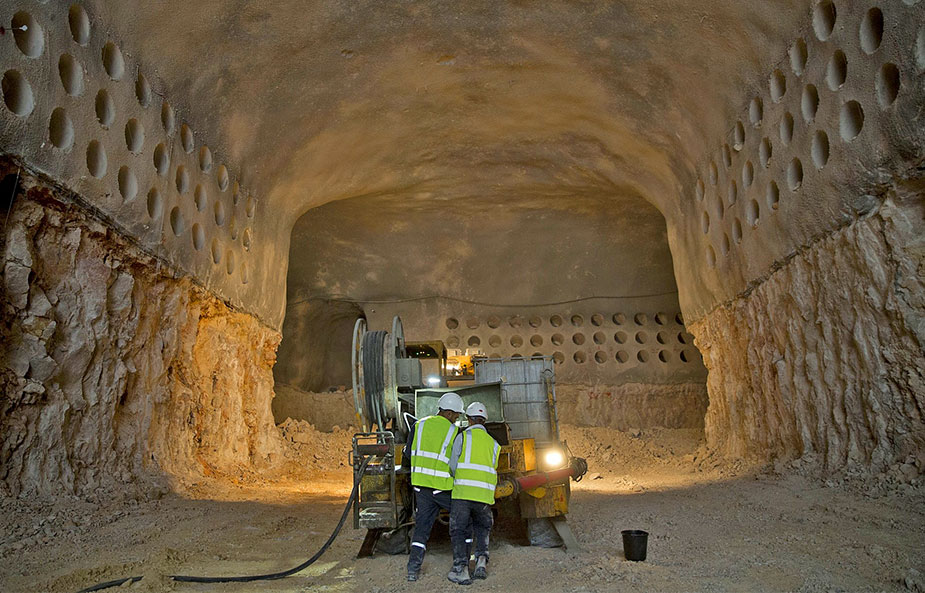
Construction of a tunnel for burial, Jerusalem, Israel. Source: stmegi.com
The tunnels will include all basic safety measures such as exit signs, emergency lights, fire fighter telephones, extinguishers, a voice evacuation system and more. In comparison to present ground-level sites, accessibility is going to be improved dramatically. The project will also adopt the most current regulations that will allow the elderly and handicapped to access all parts of the underground space.
The structural design for cemeteries calls for an “infinite” concrete lifespan. The aim is to minimize future maintenance and thus sustain durability for many years, beyond common practice, even when the space has been abandoned. The various structures will be covered with local Jerusalem limestone rock tiles to maintain the municipality’s code of practice. We will pay particular attention to maintaining the connection to the ground of each grave even in stacked burials, thus maintaining the testament, “For dust you are and to dust you shall return.” As mentioned earlier, this unique solution can also be suitable for cremated remains.
One of our major goals is to make the new underground cemetery a pleasant place to visit. This will involve investment in the tunnels’ finishing materials so that visitors will feel serenity and respect, rather than suffocated or claustrophobic.
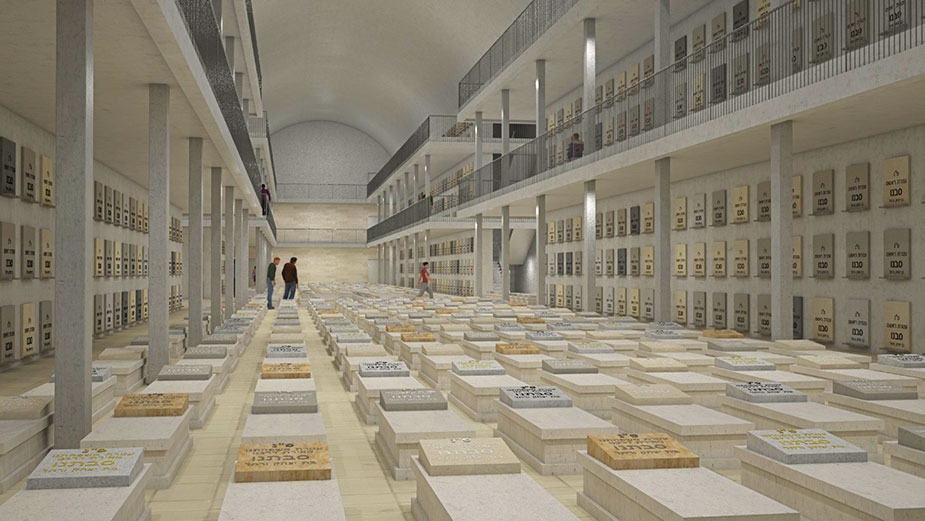
The architectural concept of the underground cemetery project Jerusalem, Israel
Conclusion
The revival of underground cemeteries addresses both the opportunity and challenges noted above. It provides an environmental solution by preserving precious land. In contrast to the utilization of precious open spaces and turning our landscapes into fields of graves, the underground space resource is almost limitless. In addition, it restores an ancient tradition of burial in a way that overcomes key sources of resistance to the plan. In combining the old with the new, our proposed renewal of burial in tunnels should be integrated in the underground solutions our industry is offering to urban problems.
Jerusalem has been a source of wisdom and ingenuity since ancient times. Nowadays, reviving the practice of underground burial, which began in Jerusalem, can become a beacon for the planning of future cemeteries. We truly believe that major cities worldwide can benefit enormously from the forsaken idea we are restoring today, while utilizing state-of-the-art design and construction tools. Our solution reflects our shared belief that the living should inherit the land and not the dead.
Additional articles
Select an article of interest:
Mongolia designs new railway “Bohdan”
March 1, 2022
The construction of largest hydraulic tunnel has begun in Qatar
February 28, 2022
JSC "VO "Mashinoimport" supplied escalators for the Novosibirsk metro
December 22, 2021
Russian city Samara plans to build a metro
December 17, 2021
Tell us about our article to your friends,
sharing a link in a social network















Comments (0)
I hereby confirm that I am familiar with the privacy policy of
and agree to the processing of personal data. Read more